Answered step by step
Verified Expert Solution
Question
1 Approved Answer
A family-practice medical clinic employs two receptionists, three nurse clinicians, and one physician. The receptionists (RSs) have been trained to screen patients with regard to
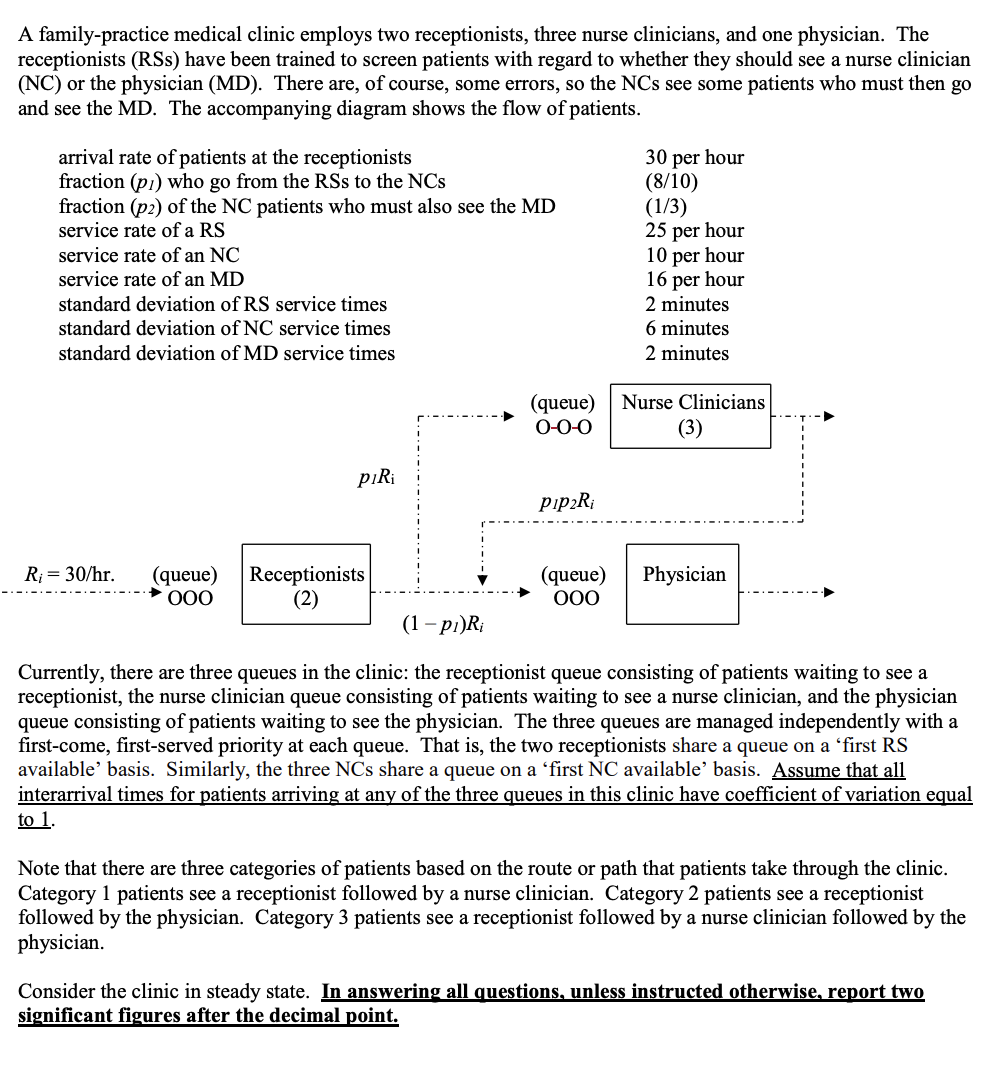
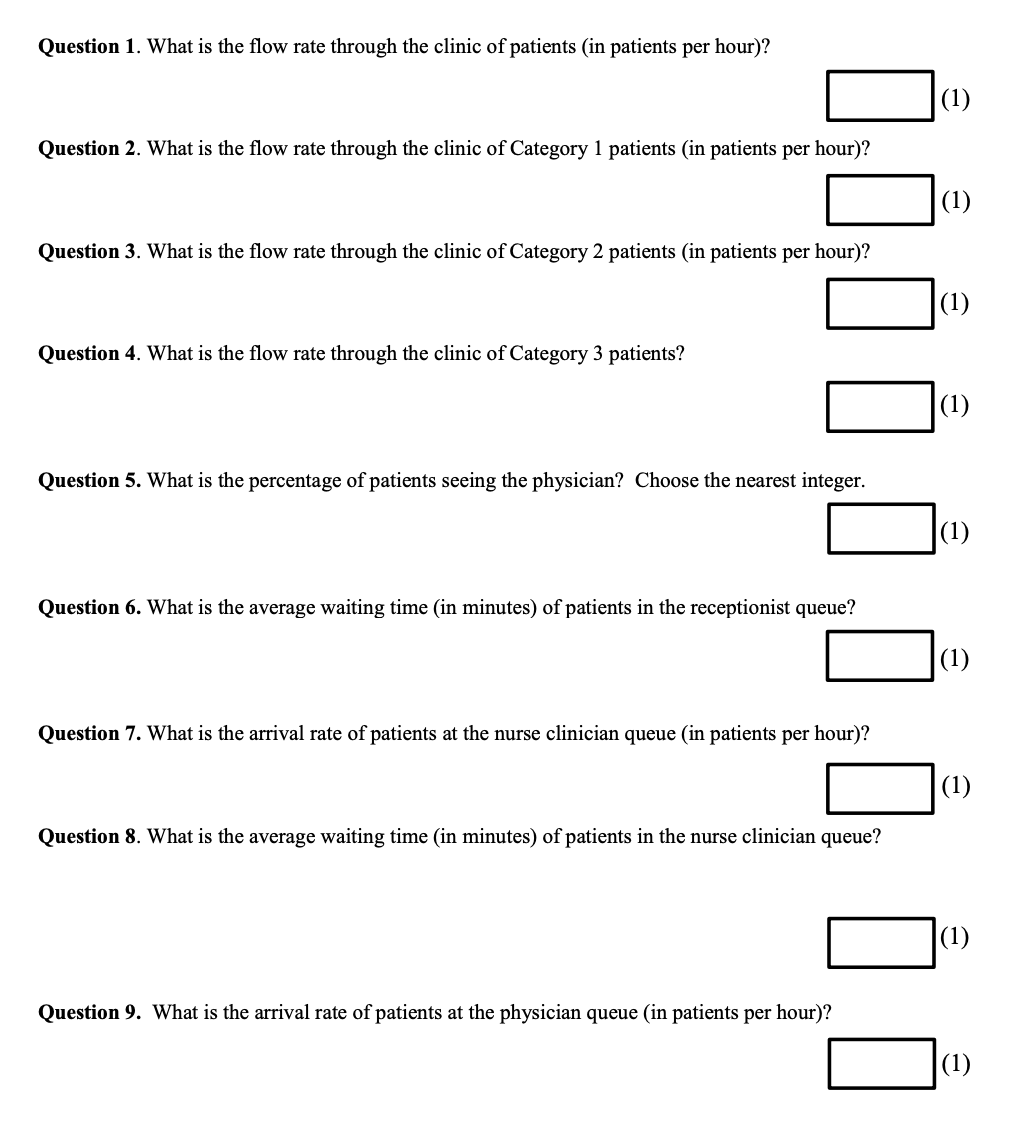
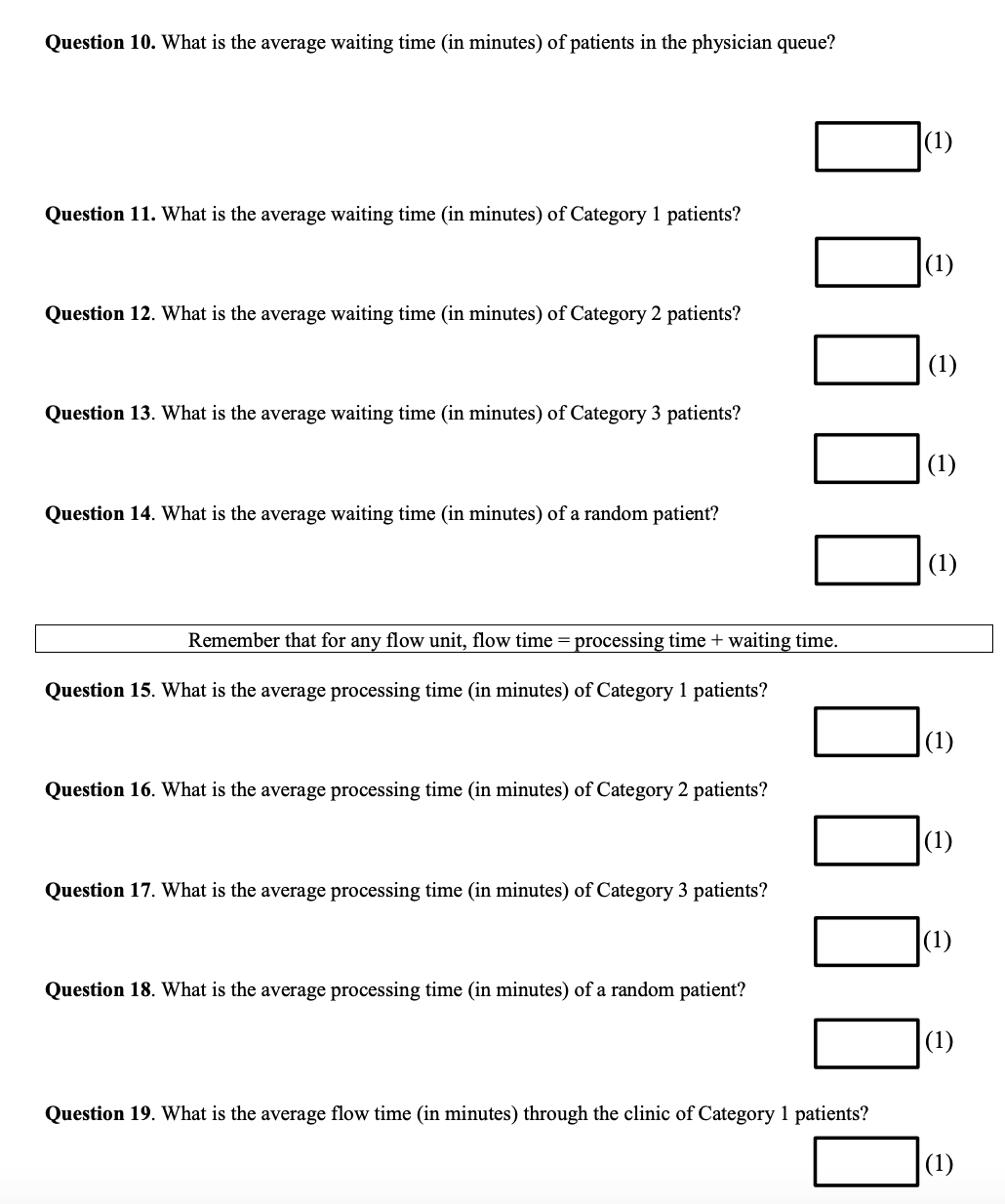
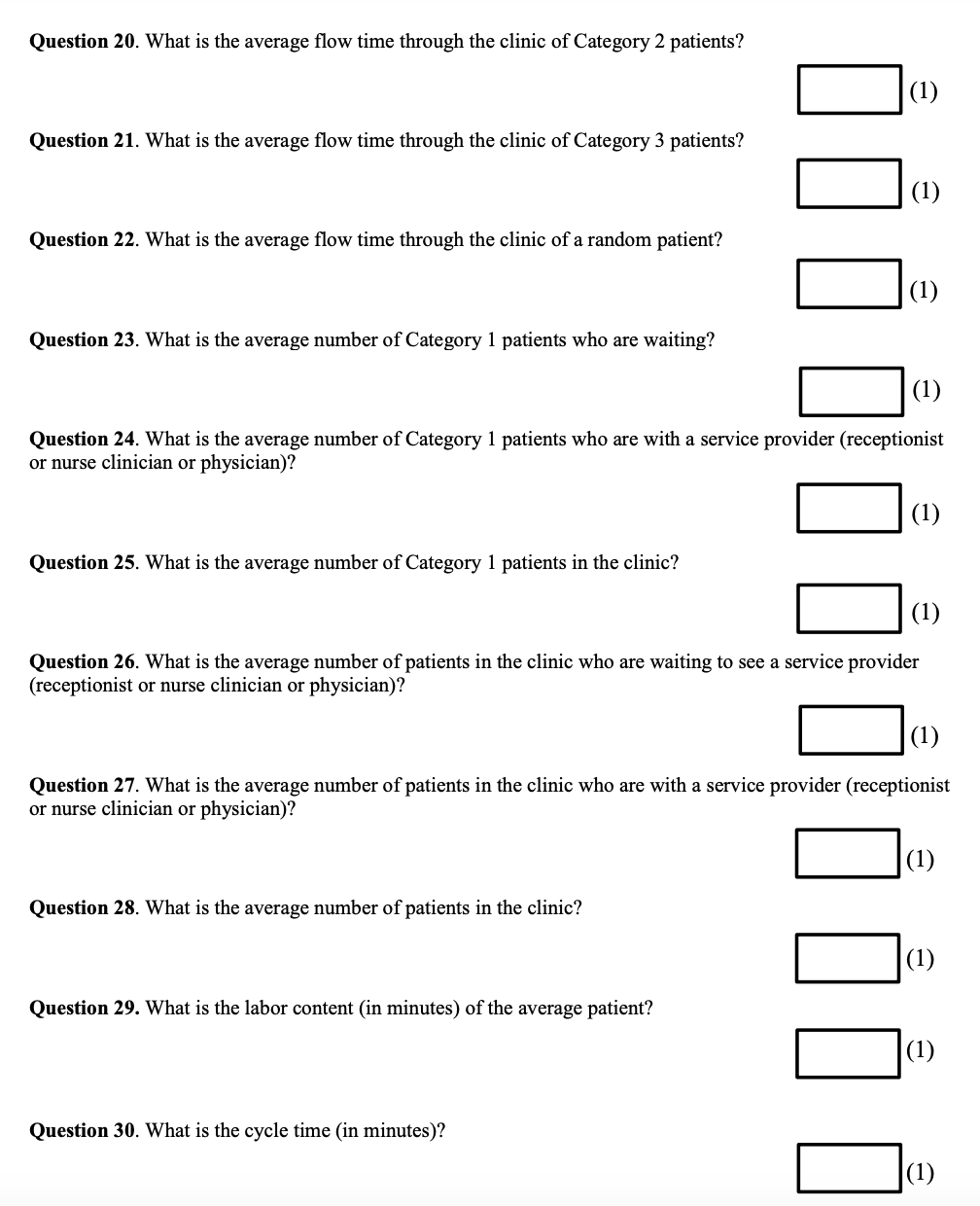
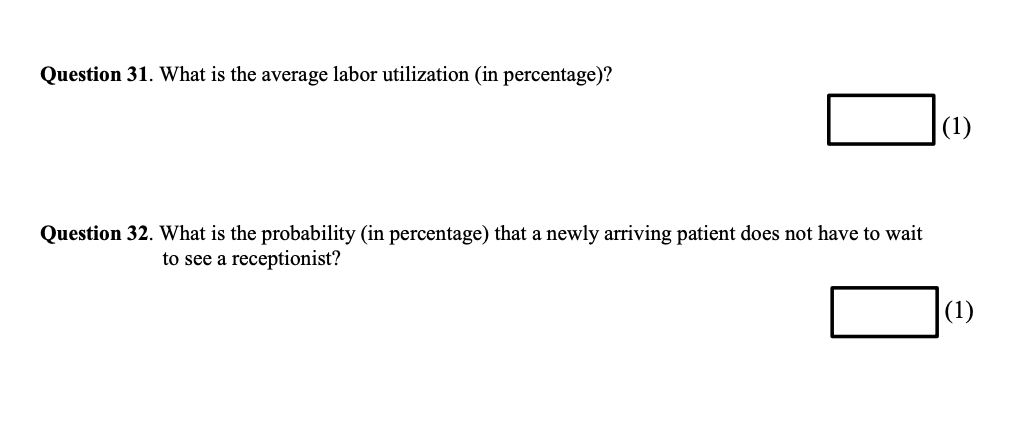 A family-practice medical clinic employs two receptionists, three nurse clinicians, and one physician. The receptionists (RSs) have been trained to screen patients with regard to whether they should see a nurse clinician (NC) or the physician (MD). There are, of course, some errors, so the NCs see some patients who must then go and see the MD. The accompanying diagram shows the flow of patients. Currently, there are three queues in the clinic: the receptionist queue consisting of patients waiting to see a receptionist, the nurse clinician queue consisting of patients waiting to see a nurse clinician, and the physician queue consisting of patients waiting to see the physician. The three queues are managed independently with a first-come, first-served priority at each queue. That is, the two receptionists share a queue on a 'first RS available' basis. Similarly, the three NCs share a queue on a 'first NC available' basis. Assume that all interarrival times for patients arriving at any of the three queues in this clinic have coefficient of variation equal to 1 . Note that there are three categories of patients based on the route or path that patients take through the clinic. Category 1 patients see a receptionist followed by a nurse clinician. Category 2 patients see a receptionist followed by the physician. Category 3 patients see a receptionist followed by a nurse clinician followed by the physician. Consider the clinic in steady state. In answering all questions, unless instructed otherwise, report two significant figures after the decimal point. Question 1. What is the flow rate through the clinic of patients (in patients per hour)? Question 2. What is the flow rate through the clinic of Category 1 patients (in patients per hour)? Question 3. What is the flow rate through the clinic of Category 2 patients (in patients per hour)? Question 4. What is the flow rate through the clinic of Category 3 patients? Question 5. What is the percentage of patients seeing the physician? Choose the nearest integer. Question 6. What is the average waiting time (in minutes) of patients in the receptionist queue? Question 7. What is the arrival rate of patients at the nurse clinician queue (in patients per hour)? Question 8. What is the average waiting time (in minutes) of patients in the nurse clinician queue? Question 10. What is the average waiting time (in minutes) of patients in the physician queue? Question 11. What is the average waiting time (in minutes) of Category 1 patients? Question 12. What is the average waiting time (in minutes) of Category 2 patients? Question 13. What is the average waiting time (in minutes) of Category 3 patients? Question 14. What is the average waiting time (in minutes) of a random patient? Question 15. What is the average processing time (in minutes) of Category 1 patients? Question 16. What is the average processing time (in minutes) of Category 2 patients? Question 17. What is the average processing time (in minutes) of Category 3 patients? Question 18. What is the average processing time (in minutes) of a random patient? (1) Question 19. What is the average flow time (in minutes) through the clinic of Category 1 patients? Question 20. What is the average flow time through the clinic of Category 2 patients? Question 21. What is the average flow time through the clinic of Category 3 patients? Question 22. What is the average flow time through the clinic of a random patient? Question 23. What is the average number of Category 1 patients who are waiting? Question 24. What is the average number of Category 1 patients who are with a service provider (receptionist or nurse clinician or physician)? Question 25. What is the average number of Category 1 patients in the clinic? Question 26. What is the average number of patients in the clinic who are waiting to see a service provider (receptionist or nurse clinician or physician)? Question 27. What is the average number of patients in the clinic who are with a service provider (receptionist or nurse clinician or physician)? Question 28. What is the average number of patients in the clinic? Question 29. What is the labor content (in minutes) of the average patient? (1) Question 30. What is the cycle time (in minutes)? Question 31. What is the average labor utilization (in percentage)? Question 32. What is the probability (in percentage) that a newly arriving patient does not have to wait to see a receptionist
A family-practice medical clinic employs two receptionists, three nurse clinicians, and one physician. The receptionists (RSs) have been trained to screen patients with regard to whether they should see a nurse clinician (NC) or the physician (MD). There are, of course, some errors, so the NCs see some patients who must then go and see the MD. The accompanying diagram shows the flow of patients. Currently, there are three queues in the clinic: the receptionist queue consisting of patients waiting to see a receptionist, the nurse clinician queue consisting of patients waiting to see a nurse clinician, and the physician queue consisting of patients waiting to see the physician. The three queues are managed independently with a first-come, first-served priority at each queue. That is, the two receptionists share a queue on a 'first RS available' basis. Similarly, the three NCs share a queue on a 'first NC available' basis. Assume that all interarrival times for patients arriving at any of the three queues in this clinic have coefficient of variation equal to 1 . Note that there are three categories of patients based on the route or path that patients take through the clinic. Category 1 patients see a receptionist followed by a nurse clinician. Category 2 patients see a receptionist followed by the physician. Category 3 patients see a receptionist followed by a nurse clinician followed by the physician. Consider the clinic in steady state. In answering all questions, unless instructed otherwise, report two significant figures after the decimal point. Question 1. What is the flow rate through the clinic of patients (in patients per hour)? Question 2. What is the flow rate through the clinic of Category 1 patients (in patients per hour)? Question 3. What is the flow rate through the clinic of Category 2 patients (in patients per hour)? Question 4. What is the flow rate through the clinic of Category 3 patients? Question 5. What is the percentage of patients seeing the physician? Choose the nearest integer. Question 6. What is the average waiting time (in minutes) of patients in the receptionist queue? Question 7. What is the arrival rate of patients at the nurse clinician queue (in patients per hour)? Question 8. What is the average waiting time (in minutes) of patients in the nurse clinician queue? Question 10. What is the average waiting time (in minutes) of patients in the physician queue? Question 11. What is the average waiting time (in minutes) of Category 1 patients? Question 12. What is the average waiting time (in minutes) of Category 2 patients? Question 13. What is the average waiting time (in minutes) of Category 3 patients? Question 14. What is the average waiting time (in minutes) of a random patient? Question 15. What is the average processing time (in minutes) of Category 1 patients? Question 16. What is the average processing time (in minutes) of Category 2 patients? Question 17. What is the average processing time (in minutes) of Category 3 patients? Question 18. What is the average processing time (in minutes) of a random patient? (1) Question 19. What is the average flow time (in minutes) through the clinic of Category 1 patients? Question 20. What is the average flow time through the clinic of Category 2 patients? Question 21. What is the average flow time through the clinic of Category 3 patients? Question 22. What is the average flow time through the clinic of a random patient? Question 23. What is the average number of Category 1 patients who are waiting? Question 24. What is the average number of Category 1 patients who are with a service provider (receptionist or nurse clinician or physician)? Question 25. What is the average number of Category 1 patients in the clinic? Question 26. What is the average number of patients in the clinic who are waiting to see a service provider (receptionist or nurse clinician or physician)? Question 27. What is the average number of patients in the clinic who are with a service provider (receptionist or nurse clinician or physician)? Question 28. What is the average number of patients in the clinic? Question 29. What is the labor content (in minutes) of the average patient? (1) Question 30. What is the cycle time (in minutes)? Question 31. What is the average labor utilization (in percentage)? Question 32. What is the probability (in percentage) that a newly arriving patient does not have to wait to see a receptionist Step by Step Solution
There are 3 Steps involved in it
Step: 1

Get Instant Access to Expert-Tailored Solutions
See step-by-step solutions with expert insights and AI powered tools for academic success
Step: 2

Step: 3

Ace Your Homework with AI
Get the answers you need in no time with our AI-driven, step-by-step assistance
Get Started


